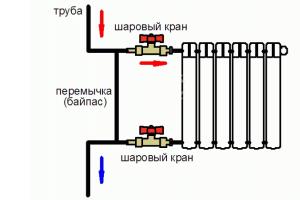HIV infection is a viral disease that weakens the immune system, leading to the development of tumors and secondary infections. If this disease is not treated, then on average 9–11 years after the virus enters the body, death occurs. Therapy makes it possible to increase the life expectancy of an infected person to 70–80 years.
HIV – what is it?
The human immunodeficiency virus attacks the immune system. The disease progresses slowly. The weaker the body's immune defense becomes, the more often the patient gets sick. Many infected people develop benign and malignant tumors. Over time, the immune system becomes so weak that even mild colds can be fatal. The human immunodeficiency virus exclusively affects humans. Attempts to infect animals were unsuccessful - the animals were quickly cured.

Spread of HIV infection
Today, the immunodeficiency virus is considered one of the most actively progressive diseases. Already in the late 80s, statistics horrified the public: in countries that are members of the World Health Organization, almost 120 thousand people were found infected with AIDS (a more severe form of HIV) and about 100 thousand people infected with HIV. The worst thing is that in reality the figures are much higher, because many patients do not even know about their diagnosis and are not registered.
How HIV infection is perceived by each organism depends on its geno- and phenotypic characteristics. Because of this, it turns out that some patients “burn out” from the disease in a matter of days, while others live with the immunodeficiency virus for years, feel great and are not even aware of their problems. According to statistics, representatives of the Negroid race are more susceptible to HIV. Europeans are less sensitive to the virus, and Mongoloids are considered the most “resistant”.
The countries where HIV infection is spreading the fastest are:
- Brazil;
- Haiti;
- Türkiye;
- Indonesia;
- Bangladesh;
- Pakistan;
- Mexico;
- Britannia.
How is HIV transmitted?
To be able to protect yourself from the immunodeficiency virus, you need to know the main routes of HIV infection. Its source is an infected person. Those patients in whose bodies the virus is in the incubation period also pose a danger. The greatest chance of HIV transmission is at the end of the incubation period. At this moment, the concentration of the virus is maximum.
HIV infection can penetrate into all biological fluids - blood, semen, saliva, vaginal secretions, tears, sweat, breast milk, urine, cerebrospinal fluid - but its concentration is different, and this determines their excellent epidemiological significance. Transmission of HIV infection must occur under appropriate conditions. The virus needs to be released from the infected body naturally and penetrate into the internal environment of a healthy one.
The routes of transmission of HIV infection are varied:
- sexual;
- injection;
- transfusion;
- transplantation;
- transplacental.
The virus is mainly transmitted through sexual contact. This is explained by the fact that the highest concentration of HIV infection is found in the semen and vaginal secretions of infected people. According to statistics, sexual contacts account for 86% of infections, of which 71% are heterosexual, 15% are homosexual. Another route of transmission of the virus is perinatal. HIV can enter a child’s body in the womb or after birth through breast milk.
HIV – incubation period
The virus develops differently in each body. Therefore, the incubation period of HIV infection remains uncertain. Symptoms of the disease can appear several weeks or years after infection. In the early stages of the incubation period, specific antibodies are formed in the blood. Before they can be detected in a laboratory test, at least three weeks must pass from the moment of probable infection.
HIV infection - symptoms

In most cases, the disease develops according to the standard pattern. There are two main stages of HIV infection: persistent and latent. Soon after infection, the first symptoms of the disease appear, which can easily be confused with signs of the flu or a common cold: the temperature rises, the throat begins to hurt,. Many patients with the immunodeficiency virus do not associate all this, because after 2-3 weeks the manifestation of HIV infection stops and the disease enters the second stage.
The immunodeficiency virus can “hide” in the body from a couple of months to several decades. After the latent stage comes to an end, patients suddenly begin to develop various diseases, including cancer. Symptoms of HIV also become apparent. Among the latest:
- sudden weight loss;
- frequent headaches;
- chronic colds;
- regular bouts of diarrhea;
- chest pain;
- lung diseases;
- loss of vision;
- dental diseases;
- depression and apathy.
HIV infection - symptoms in women
The initial stage of the disease in women is characterized by the following signs of HIV infection, which persist for one to two weeks:
- fever;
- rashes on the body;
- sore throat;
- frequent and severe headaches;
- nausea;
- constant fatigue;
- enlarged lymph nodes;
- the appearance of ulcers in the mouth;
- muscle and joint pain;
- various yeast infections.
When the immunodeficiency virus enters a more severe stage, the following symptoms appear:
- exhaustion;
- persistent stomach upset accompanied by diarrhea;
- erosion;
- periodic temperature fluctuations;
- dry cough;
- deterioration and sometimes complete loss of memory;
- confusion;
- inflammation of the pelvic organs.
HIV infection - symptoms in men
Signs of the disease in the bodies of representatives of the stronger sex differ slightly from female symptoms. HIV infection manifests itself in men as follows: already 5–10 days after infection, a rash appears on the patient’s body. After some time, the lymph nodes in the groin, armpits and neck enlarge. The glands become dense, but touching them does not cause pain. Most patients with HIV complain of severe fatigue, sudden loss of appetite, apathy towards work and a constant desire to sleep.
The following symptoms are characteristic of the AIDS stage:
- fever;
- painful incessant cough;
- diarrhea;
- vomit;
- stomach cramps;
- fever that is difficult to bring down;
- a sharp decrease in body weight;
- anxiety;
- partial memory loss.
Diagnosis of HIV infection

The most common method for determining HIV is ELISA. With the help of special test systems that use artificially derived proteins of the immunodeficiency virus, it is possible to determine antibodies to pathogenic microorganisms in the blood. Modern HIV diagnostics can detect infection within 3 to 5 weeks after infection.
Treatment of HIV infection
Therapy for the immunodeficiency virus is a complex process and must be approached very responsibly. Being infected with HIV is no longer considered a death sentence. Medicine knows many cases of successful treatment. Antiretroviral therapy is considered the most effective, which pursues the following goals:
- Stop the virus from reproducing and reduce the viral load. That is, to make sure that HIV is not detected in the body.
- Restore immunity. Once the viral load has decreased, the body can gradually increase the number of CD4 lymphocytes to ensure an adequate immune system response.
- Increase the length and quality of life of the patient. Timely, correct treatment relieves an HIV-positive person from all symptoms of the disease.
Treatment of HIV infection - drugs
Antiviral drugs control replication and slow down the development of diseases associated with the virus. In most cases, patients with HIV infection are advised to take the following medications:
- Nevirapine;
- Ritonavir;
- Cytovudine;
- Tenofovir;
- Etravirine;
- Delavirdine;
- Maraviroc;
- Tipranavir;
- Abacavir;
- Lamivudine;
- Nelfinavir;
- Fosamprenavir.
Treatment of HIV with folk remedies at home
The human immunodeficiency virus can be treated with unconventional methods, but only after consultation with a doctor. Healers recommend that HIV-positive people switch to high-calorie vegetarian foods. Eat more pistachios, oats, pine nuts, juices, giving up salt, sugar, and meat dishes. Herbal infusion is useful for infected people. Astragalus, roots of bird knotweed, violet, poplar buds, licorice roots are mixed in equal quantities, poured with boiling water and infused for 3 hours. You should drink half a glass of the infusion before meals.
Human immunodeficiency virus - prevention
It’s easy to prevent infection if you know and follow a few important rules:
- involves avoiding casual sex.
- You should be regularly tested for the presence of the virus in your body.
- Measures to prevent HIV infection also include abstaining from drugs.
The human immunodeficiency virus belongs to the group of retroviruses and provokes the development of HIV infection. This disease can occur in several stages, each of which differs in clinical picture and intensity of manifestations.
Stages of HIV
Stages of development of HIV infection:
- incubation period;
- primary manifestations are acute infection, asymptomatic and generalized lymphadenopathy;
- secondary manifestations - persistent damage to internal organs, damage to the skin and mucous membranes, generalized diseases;
- terminal stage.
According to statistics, HIV infection is most often diagnosed at the stage of secondary manifestations and this is due to the fact that the symptoms of HIV become pronounced and begin to bother the patient during this period of the disease.
At the first stage of development of HIV infection, certain symptoms may also be present, but they, as a rule, are mild, the clinical picture is blurred, and the patients themselves do not turn to doctors for such “little things.” But there is one more nuance - even if a patient seeks qualified medical help at the first stage of HIV infection, specialists may not diagnose the pathology. Moreover, at this stage of development of the disease in question, the symptoms will be the same in men and women - this often confuses doctors. And only at the secondary stage is it quite possible to hear the diagnosis of HIV infection, and the symptoms will be individual for males and females.
How long does it take for HIV to appear?
We recommend reading: The first signs of HIV infection go unnoticed, but they are there. And they appear on average from 3 weeks to 3 months after infection. A longer period is also possible.
The first signs of HIV infection go unnoticed, but they are there. And they appear on average from 3 weeks to 3 months after infection. A longer period is also possible.
Signs of secondary manifestations of the disease in question may also appear only many years after contracting HIV infection, but manifestations may also occur as early as 4-6 months from the moment of infection.
We recommend reading: After a person becomes infected with HIV, no symptoms or even small hints of the development of any pathology are observed for a long time. It is precisely this period that is called incubation; it can last, in accordance with the classification of V.I. Pokrovsky, from 3 weeks to 3 months.
After a person becomes infected with HIV, no symptoms or even small hints of the development of any pathology are observed for a long time. It is precisely this period that is called incubation; it can last, in accordance with the classification of V.I. Pokrovsky, from 3 weeks to 3 months.
No examinations or laboratory tests of biomaterials (serological, immunological, hematological tests) will help identify HIV infection, and the infected person himself does not look sick at all. But it is the incubation period, without any manifestations, that poses a particular danger - a person serves as a source of infection.
Some time after infection, the patient enters an acute phase of the disease - the clinical picture during this period may become a reason for diagnosing HIV infection as “questionable”.
The first manifestations of HIV infection in the acute phase of its course strongly resemble the symptoms of mononucleosis. They appear on average from 3 weeks to 3 months from the moment of infection. These include:

When examining a patient, a doctor can determine a slight increase in the size of the spleen and liver - the patient, by the way, may also complain of periodic pain in the right hypochondrium. The patient's skin may be covered with a small rash - pale pink spots that do not have clear boundaries. Often there are complaints from infected people about long-term bowel dysfunction - they are tormented by diarrhea, which is not relieved even by specific medications and changes in diet.
Please note: during this course of the acute phase of HIV infection, increased numbers of lymphocytes/leukocytes and atypical mononuclear cells will be detected in the blood.
The above-described signs of the acute phase of the disease in question can be observed in 30% of patients. Another 30-40% of patients experience an acute phase in the development of serous meningitis or encephalitis - the symptoms will be radically different from those already described: nausea, vomiting, increased body temperature to critical levels, severe headache.
Often the first symptom of HIV infection is esophagitis - an inflammatory process in the esophagus, which is characterized by difficulty swallowing and pain in the chest area.
Whatever the form of the acute phase of HIV infection, after 30-60 days all symptoms disappear - often the patient thinks that he has been completely cured, especially if this period of pathology was practically asymptomatic or their intensity was low (and this can also be ).
 During this stage of the disease in question, there are no symptoms - the patient feels great and does not consider it necessary to appear at a medical facility for a preventive examination. But it is at the asymptomatic stage that antibodies to HIV can be detected in the blood! This makes it possible to diagnose pathology at one of the early stages of development and begin adequate, effective treatment.
During this stage of the disease in question, there are no symptoms - the patient feels great and does not consider it necessary to appear at a medical facility for a preventive examination. But it is at the asymptomatic stage that antibodies to HIV can be detected in the blood! This makes it possible to diagnose pathology at one of the early stages of development and begin adequate, effective treatment.
The asymptomatic stage of HIV infection can last several years, but only if the patient’s immune system has not been significantly damaged. The statistics are quite contradictory - only 30% of patients within 5 years after the asymptomatic course of HIV infection begin to experience symptoms of the following stages, but in some infected people the asymptomatic stage progresses rapidly, lasting no more than 30 days.
 This stage is characterized by an increase in almost all groups of lymph nodes; this process does not affect only the inguinal lymph nodes. It is noteworthy that it is generalized lymphadenopathy that can become the main symptom of HIV infection if all previous stages of development of the disease in question occurred without any manifestations.
This stage is characterized by an increase in almost all groups of lymph nodes; this process does not affect only the inguinal lymph nodes. It is noteworthy that it is generalized lymphadenopathy that can become the main symptom of HIV infection if all previous stages of development of the disease in question occurred without any manifestations.
Lymphozules increase by 1-5 cm, remain mobile and painless, and the surface of the skin above them has absolutely no signs of a pathological process. But with such a pronounced symptom as enlarged groups of lymph nodes, the standard causes of this phenomenon are excluded. And here, too, lies the danger - some doctors classify lymphadenopathy as difficult to explain.
The stage of generalized lymphadenopathy lasts 3 months, about 2 months after the start of the stage the patient begins to lose weight.
Secondary manifestations
It often happens that it is the secondary manifestations of HIV infection that serve as the basis for high-quality diagnosis. Secondary manifestations include:
 The patient notices a sudden increase in body temperature, he develops a dry, obsessive cough, which eventually turns into a wet one. The patient develops intense shortness of breath with minimal physical activity, and the patient's general condition rapidly deteriorates. Therapy carried out using antibacterial drugs (antibiotics) does not produce a positive effect.
The patient notices a sudden increase in body temperature, he develops a dry, obsessive cough, which eventually turns into a wet one. The patient develops intense shortness of breath with minimal physical activity, and the patient's general condition rapidly deteriorates. Therapy carried out using antibacterial drugs (antibiotics) does not produce a positive effect.
Generalized infection
These include herpes, tuberculosis, cytomegalovirus infection, and candidiasis. Most often, these infections affect women and, against the background of the human immunodeficiency virus, they are extremely severe.
Kaposi's sarcoma
This is a neoplasm/tumor that develops from lymphatic vessels. More often diagnosed in men, it has the appearance of multiple tumors of a characteristic cherry color located on the head, torso and in the oral cavity.
Damage to the central nervous system
At first, this manifests itself only as minor problems with memory and decreased concentration. But as the pathology progresses, the patient develops dementia.
Features of the first signs of HIV infection in women
 If a woman is infected with the human immunodeficiency virus, then secondary symptoms will most likely manifest themselves in the form of development and progression of generalized infections - herpes, candidiasis, cytomegalovirus infection, tuberculosis.
If a woman is infected with the human immunodeficiency virus, then secondary symptoms will most likely manifest themselves in the form of development and progression of generalized infections - herpes, candidiasis, cytomegalovirus infection, tuberculosis.
Often, secondary manifestations of HIV infection begin with a banal menstrual cycle disorder; inflammatory processes in the pelvic organs, for example, salpingitis, can develop. Oncological diseases of the cervix - carcinoma or dysplasia - are also often diagnosed.
Features of HIV infection in children
 Children who were infected with the human immunodeficiency virus during pregnancy (in utero from the mother) have some features in the course of the disease. Firstly, the disease begins its development at 4-6 months of life. Secondly, the earliest and main symptom of HIV infection during intrauterine infection is considered to be a disorder of the central nervous system - the baby lags behind his peers in physical and mental development. Thirdly, children with the human immunodeficiency virus are susceptible to the progression of digestive system disorders and the appearance of purulent diseases.
Children who were infected with the human immunodeficiency virus during pregnancy (in utero from the mother) have some features in the course of the disease. Firstly, the disease begins its development at 4-6 months of life. Secondly, the earliest and main symptom of HIV infection during intrauterine infection is considered to be a disorder of the central nervous system - the baby lags behind his peers in physical and mental development. Thirdly, children with the human immunodeficiency virus are susceptible to the progression of digestive system disorders and the appearance of purulent diseases.
The human immunodeficiency virus is still an unexplored disease - too many questions arise both during diagnosis and treatment. But doctors say that only patients themselves can detect HIV infection at an early stage - they are the ones who must closely monitor their health and periodically undergo preventive examinations. Even if the symptoms of HIV infection are hidden, the disease develops - only a timely test analysis will help save the patient’s life for several years.
Answers to popular questions about HIV
Due to the large number of requests from our readers, we decided to group the most common questions and answers to them in one section.
Signs of HIV infection appear approximately 3 weeks to 3 months after dangerous contact. An increase in temperature, sore throat and enlarged lymph nodes in the first days after infection may indicate any pathology other than the human immunodeficiency virus. During this period (doctors call it incubation), not only are there no symptoms of HIV, but in-depth laboratory blood tests will not give a positive result.
Yes, unfortunately, this is rare, but it does happen (in about 30% of cases): a person does not notice any characteristic symptoms during the acute phase, and then the disease goes into the latent phase (this is, in fact, an asymptomatic course for about 8 - 10 years ).
Most modern screening tests are based on enzyme-linked immunosorbent assay (ELISA) - this is the “gold standard” for diagnosis, and an accurate result can be counted on no earlier than 3 to 6 months after infection. Therefore, the test must be taken twice: 3 months after possible infection and then another 3 months later.
Firstly, you need to take into account the period that has passed since the potentially dangerous contact - if less than 3 weeks have passed, then these symptoms may indicate a common cold.
Secondly, if more than 3 weeks have already passed since the possible infection, then you should not stress yourself out - just wait and 3 months after the dangerous contact undergo a specific examination.
Thirdly, increased body temperature and enlarged lymph nodes are not “classic” signs of HIV infection! Often the first manifestations of the disease are expressed by pain in the chest and a burning sensation in the esophagus, stool disturbances (the person is bothered by frequent diarrhea), and a pale pink rash on the skin.
The risk of contracting HIV infection through oral sex is minimized. The fact is that the virus does not survive in the environment, so in order to be infected orally, two conditions must come together: there are wounds/abrasions on the partner’s penis and wounds/abrasions in the partner’s mouth. But even these circumstances do not in every case lead to HIV infection. For your own peace of mind, you need to take a specific HIV test 3 months after dangerous contact and undergo a “control” examination after another 3 months.
There are a number of medications that are used for post-exposure prophylaxis for HIV. Unfortunately, they are not available for sale, so you will have to go to an appointment with a therapist and explain the situation. There is no guarantee that such measures will 100% prevent the development of HIV infection, but experts say that taking such medications is quite advisable - the risk of developing the human immunodeficiency virus is reduced by 70-75%.
If there is no opportunity (or courage) to consult a doctor with a similar problem, then there is only one thing left to do - wait. You will need to wait 3 months, then undergo an HIV test, and even if the result is negative, you should take a control test after another 3 months.
No you can not! The human immunodeficiency virus does not survive in the environment, therefore, with people who are classified as HIV-positive, you can without hesitation share dishes, bed linen, and visit the pool and sauna.
There are risks of infection, but they are quite small. So, with a single vaginal sexual intercourse without a condom, the risk is 0.01 - 0.15%. With oral sex, the risks range from 0.005 to 0.01%, with anal sex - from 0.065 to 0.5%. These statistics are provided in the clinical protocols for the WHO European Region for HIV/AIDS treatment and care (page 523).
Cases have been described in medicine where married couples, where one of the spouses was HIV-infected, lived sexually without using condoms for several years, and the second spouse remained healthy.
If a condom was used during sexual intercourse, it was used according to instructions and remained intact, then the risk of becoming infected with HIV is minimized. If, 3 or more months after the questionable contact, symptoms reminiscent of HIV infection appear, then you just need to consult a therapist. An increase in temperature and enlarged lymph nodes may indicate the development of acute respiratory viral infections and other diseases. For your own peace of mind, you should get tested for HIV.
To answer this question, you need to know at what time and how many times such an analysis was taken:
- a negative result in the first 3 months after dangerous contact cannot be accurate; doctors talk about a false negative result;
- a negative HIV test response after 3 months from the moment of dangerous contact - most likely the person being examined is not infected, but another test must be done 3 months after the first for control;
- negative HIV test response 6 months or more after dangerous contact - the subject is not infected.
The risks in this case are extremely small - the virus quickly dies in the environment, therefore, even if the blood of an infected person remains on the needle, it is almost impossible to become infected with HIV by being injured by such a needle. There cannot be a virus in dried biological fluid (blood). However, after 3 months, and then again - after another 3 months - it is still worth taking an HIV test.
Tsygankova Yana Aleksandrovna, medical observer, therapist of the highest qualification category.
The human immunodeficiency virus is in no hurry to manifest itself when it enters the body. The hard shell of the pathogen - supercapsid - is sparingly soluble in human biological fluid.
Oddly enough, the incubation period of HIV has a duration directly proportional to the strength of the immune system. The more active the immune cells are, and the greater their number, the shorter the latent period of infection.
The virus circulates freely in the blood without undergoing changes in the liver cells. Unlike bacteria, which “make themselves known” in the first hours after infection, the virus needs to penetrate the cell. Only then do the manifestations of the disease begin.
Incubation period of HIV infection
 The time required for the virus to activate is the incubation period. The immunodeficiency virus needs to invade class T lymphocytes, specifically T helper cells.
The time required for the virus to activate is the incubation period. The immunodeficiency virus needs to invade class T lymphocytes, specifically T helper cells.
Once inside the cell, the immunodeficiency virus invades the cell nucleus and changes the genetic program. As a result, from T-helpers - helpers of immune reactions, nuclear-free forms similar in composition appear, imitating HIV.
To activate the immunodeficiency virus, the following conditions are necessary:
- the presence of active chronic infections in the body, the pathogens of which stimulate the constant production of antibodies;
- sufficient activity of T-lymphocytes - cells that carry out immune reactions;
- the presence of T-helpers not involved in immune processes.
The duration of the incubation period for HIV ranges from two weeks (the standard immune response) to 10 years or more.
A person infected with HIV is a carrier of the infection, regardless of whether the disease manifests itself or not.
HIV seronegative period
 The word seronegative means that serological tests for HIV are negative. Simply put, the virus circulates in the blood, but no one cares about it.
The word seronegative means that serological tests for HIV are negative. Simply put, the virus circulates in the blood, but no one cares about it.
This occurs for reasons of low aggressiveness of T-lymphocytes and can occur in two cases:
- T lymphocytes every single one of them (theoretically) is busy “working” with other pathogens.
- T helper cells there are not enough in the blood, and new ones are not produced for some reason (often objective).
As a result, immune cells do not come into contact with the virus, and antibodies to HIV are not produced.
Groups of people with the shortest incubation period for HIV infection
 These are the so-called risk groups, but not due to the possibility of infection, but due to the transience of the developed clinical picture of AIDS.
These are the so-called risk groups, but not due to the possibility of infection, but due to the transience of the developed clinical picture of AIDS.
People who have enough immune cells, and they are constantly being produced again:
- babies– their T cells are in the growth stage;
- drug addicts- “living on debt” individuals in whom all processes are enhanced to the maximum: from the activity of the central nervous system to the production of blood cells.
The question of how long it takes for HIV to manifest itself in the body of a person who is ready for an immediate immune response is beyond doubt. Typically, the seronegative period in such people is shortened to one to two weeks.
Congenital forms appear immediately after birth, because the child experiences the prodromal period of HIV infection in the prenatal period.
Does the length of asymptomatic carriage depend on the route of HIV infection?
 AIDS is a blood infection, so little depends on the route of transmission. One way or another, infection occurs when the virus enters the blood. But the further path of infected blood is important. Where and when do viruses meet the cells they infect?
AIDS is a blood infection, so little depends on the route of transmission. One way or another, infection occurs when the virus enters the blood. But the further path of infected blood is important. Where and when do viruses meet the cells they infect?
During “classic” sexual intercourse infected blood enters the general circulation through the inferior vena cava. An immediate meeting with T-cells is simply excluded. With this route of infection, it is very difficult to calculate how long it takes for HIV to manifest itself and the very presence of the virus in the human body.
During anal sex infected blood is absorbed in the rectum on three floors:
- Into the mesenteric vein;
- Into the inferior vena cava;
- Into the portal system of the liver.
The vascular bundle of the rectum perceives viruses in all three circulatory systems, which accelerates the contact of the virus with T cells.
With a vertical route of infection - through the vessels of the umbilical cord - infected blood immediately enters the liver, where free T-lymphocytes accumulate.
As a rule, the window period for HIV infection depends on the number of viruses that have entered the body. When there are a lot of them, regardless of the inertia of immune T cells, they become forced to come into contact with immunodeficiency viruses.
Just one affected T-cell is enough, the further mechanism of development of the infection becomes irreversible. Antibodies begin to be produced - cells aimed at direct contact, which ends in complete suppression of the immune system.
As soon as the number of immune cells free from fighting HIV decreases, symptoms of HIV infection immediately appear. Acquired immunodeficiency syndrome enters its first clinical stage - a period of acute infection of the organs of the lymphoid system.
Content
Some infections, once they have entered the body, remain forever and cannot be eradicated even by powerful antibiotics. Among these is the deadly human immunodeficiency virus (HIV), which constantly suppresses immune function and creates favorable conditions for the development of cancer cells and secondary infections.
What is HIV
The disease caused by the increased activity of the human immunodeficiency virus is called HIV - it is a fatal attack on the body. The number of patients is growing every year, and the disease is characterized by a territorial factor. The virus itself is an unstable structure because it dies outside the body. But in the systemic bloodstream, HIV feels great, produces on a large scale, and destroys immune cells. In addition, all biological fluids of the body are subject to infection, such as lymph, vaginal gland secretions, and sperm.
How is HIV different from AIDS?
Even schoolchildren can decipher the mysterious abbreviation of this terrible disease. The dangerous diagnosis of HIV has a long history of the emergence of the immunodeficiency virus, which reflects changes in the body of an infected woman or man. However, it would not hurt to clarify and explain to all interested parties the difference between HIV and AIDS.
The abbreviation HIV is the pathogen itself - the human immunodeficiency virus, which gradually destroys once healthy immune cells. The second characterizes the syndrome provoked by increased activity of HIV. Simply put, AIDS is a consequence of HIV, or rather, it becomes its last, but most dangerous stage. If you can live happily ever after with an asymptomatic virus, this will not work with advanced AIDS. The etiology of the abnormal process is obvious and is specified in the basic rules of prevention.
How can you become infected with HIV?
Not everyone knows how HIV manifests itself, but every conscious person should clearly understand what the main methods of infection are. This is extremely important to prevent infection in your own body. The routes of transmission of HIV infection are obvious - mainly through unprotected sexual contact with an infected partner. The risk group includes patients with the following clinical pictures:
- bacterial vaginosis;
- taking contraceptives orally;
- traumatic sexual acts;
- sexual infections;
- sex during menstruation.
Other ways of becoming infected with a characteristic disease are through blood transfusions in the case of medical workers using unsterile instruments and biological material contaminated with infection. You can become infected with HIV during pregnancy, when the mother and fetus share a common systemic bloodstream. The baby is born already HIV-infected.
HIV incubation period
From the moment of infection to the end of the latent form of the disease, time passes differently for each patient. The incubation period of HIV infection depends on the state of the immune system: the stronger the immune system, the faster the first symptoms will appear. On average, this period covers a time interval from 2 weeks to 10 years of life. The likelihood of the first symptoms of infection increasing if one of the following conditions is present:
- the presence of chronic infections;
- high productivity of T-lymphocytes - cells,
- the presence of T-helpers not involved in immune processes.

HIV - symptoms
At first, the disease is not detected in any way; the viral process is asymptomatic. This can continue for up to a year, while the pathogenic HIV infection rapidly multiplies and attacks healthy immune cells. Symptoms of HIV infection appear much later and are represented by the addition of a secondary infection. For example, a patient has a progressive sore throat, pharyngitis, fungal infection, sinusitis, pneumonia, diarrhea, herpes. However, HIV infection does not stop there; in the future, the symptoms only frighten with their intensity.
First symptoms of HIV
The patient may simply not pay attention to the first signs of HIV, citing an exacerbation of a viral or cold disease. Symptoms of infection look like a classic sore throat: the throat begins to hurt, there is a fever, and it is difficult to stabilize the body temperature even with potent drugs. At such a clinic, it would not hurt to contact an infectious disease specialist, including getting tested for HIV. The presence of specific antibodies eloquently indicates that infection with the virus has taken place, and the disease predominates in the active phase.
Signs of HIV infection in men
You should not take the above symptoms superficially, since people die from such a terrible diagnosis even in early youth. If the pathology is identified in a timely manner, the doctor offers several methods for prolonging the period of remission and encourages a positive attitude towards the upcoming treatment. So, the symptoms of HIV in men are presented in detail below and require special attention:
- fever, temperature fluctuations;
- pathological enlargement of lymph nodes;
- muscle pain;
- reproductive system infections;
- increased number of colds;
- massive rash on the skin and in the oral cavity.

Signs of HIV infection in women
In girls, such a virus should also not be ruled out, especially if their sex life is characterized by its disorderliness. It is possible to become infected from a partner through unprotected sexual contact; the virus is not transmitted by airborne droplets, including from kissing. The duration of the incubation period of infection varies from person to person, but the symptoms of HIV in women often resemble another sexually transmitted disease. If she is a carrier of the infection, she may not notice changes in her general well-being, but in case of relapse, the signs of the disease are as follows:
- an increase in the number of attacks of female diseases, often of a viral and infectious nature;
- enlargement of lymph nodes;
- increased sweating due to impaired functioning of the sebaceous glands;
- rash on the skin and mucous membranes;
- indigestion, diarrhea.
HIV diagnosis
Knowing what symptoms are observed with HIV, it is important not to hesitate to visit an infectious disease specialist. After undergoing a comprehensive examination and establishing the fact of HIV infection, it is possible to select an effective conservative method to maintain the general state of immunity. Mandatory HIV diagnosis involves the following measures in a hospital setting to detect infection:
- ELISA method for detecting antibodies to a pathogenic virus;
- immunoblotting to study blood serum for chemical composition, infections;
- PCR to detect the RNA molecule of a pathogenic immunodeficiency virus;
- serological techniques.

HIV treatment
With a positive diagnosis and after the final diagnosis has been made, the question of how to treat HIV becomes especially acute for the patient. Otherwise, the health consequences may be very unfavorable; for example, sudden death of a patient at a young age should not be ruled out. Therefore, it is important to begin treatment of HIV infection immediately, and its main tasks are to suppress the activity of the virus, maintain the state of the immune system, and prevent the exacerbation of secondary infections. The following are the features of intensive care:
- Taking antiviral drugs aimed at reducing the reproductive activity of HIV, a dangerous infection. To correctly determine the medicine, it is important to take into account the patient’s age and the causes of inflammation.
- The use of general strengthening agents and physiotherapeutic procedures to increase the body’s immune response, as an option - dietary supplements, vitamin complexes for HIV.
- Knowing the pathogenesis of the characteristic disease, doctors do not recommend immunostimulating treatment for HIV. The infection cannot be eliminated this way.
Is HIV curable?
It has already been established that this disease cannot be cured, and the pathogenic virus prevails in the body for life in an active or passive stage. If the patient is only a carrier, he may not be aware of the potential health threat for many years. He is unlikely to care whether HIV is curable or not. But the infected patient must be treated, or rather maintain the condition at a satisfactory level. In the modern world there is no cure for HIV, but world-famous scientists do not lose hope of finding a panacea, they organize presentations and numerous tests.
How long do people live with HIV infection?
This dangerous diagnosis immediately makes the patient disabled, an outcast, and a potential threat to modern society. The main question that interests a person with this disease sounds something like this: how long do people live with HIV infection? On average, life expectancy is 5-7 years, but the indicated interval may vary depending on different indicators.

Prevention of HIV infection
Even a child should know about preventive measures that help avoid infection with the immunodeficiency virus. Measures to prevent HIV infection are announced at school and any other educational institution and are subject to publicity among the masses. You should focus on the following protective measures against infection:
- control during blood transfusion, compliance with the rules of sterility of medical instruments;
- exclusion of casual sexual contacts, infections;
- proper management of pregnancy.
Video: HIV and AIDS
Attention! The information presented in the article is for informational purposes only. The materials in the article do not encourage self-treatment. Only a qualified doctor can make a diagnosis and give treatment recommendations based on the individual characteristics of a particular patient.
Found an error in the text? Select it, press Ctrl + Enter and we will fix everything!If you have had casual sexual intercourse, especially if your second partner is infected with HIV, then you are probably tormented by the question of the incubation period of HIV infection, that is, the time after which you can determine whether you have become infected with AIDS, or the trouble has passed. We recommend that you read
INCUBATION PERIOD of HIV (AIDS)
The open window of HIV (AIDS) infection (incubation period) is a period when antibodies have not yet formed in the body of a person infected with HIV (AIDS) infection, and with the help of analysis it is impossible to reliably say that infection has not occurred or that the person has become infected .
The duration of the incubation period, during which it is impossible to know whether a person has become infected with HIV (AIDS) infection or is healthy, ranges from two weeks to one year. Everything is very individual and depends solely on the person’s immunity.
The average incubation period for HIV (AIDS) infection is three months from the moment of infection. That is, this suggests that the majority of those infected will find out about their disease (when tested) three months from the moment of infection.
The period of time from the moment of infection to the day of formation of antibodies to HIV infection is called the incubation period, during which it is impossible to determine the presence of the virus in the body.

COMMENTS FROM OUR READERS
Alex: My HIV (AIDS) infection was detected, a year and a half after I was infected, the doctor said that this happens, but very rarely, generally the incubation period of HIV is from three to five months.
Svetlana: I became infected with HIV (AIDS) from a non-regular partner, I didn’t think about it at first, and then he called and said that I needed to get checked. About three weeks had passed since I had sexual intercourse, I went to get tested for HIV (AIDS) and it already showed that I had the virus. I was upset.
Dmitry: I had a relationship with an individual without a condom, I took tests for HIV (AIDS) infection for a year and a half, the doctor advised me so, and only after the final analysis after 1.5 years I calmed down, since the analysis showed negative results. We recommend that you read








